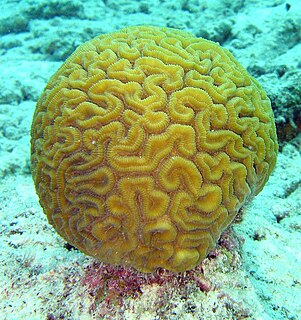
Sea urchins are typically spiny, globular animals, echinoderms in the class Echinoidea. About 950 species live on the seabed, inhabiting all oceans and depth zones from the intertidal to 5,000 metres. Their hard shells (tests) are round and spiny, usually from 3 to 10 cm across. Sea urchins move slowly, crawling with their tube feet, and sometimes pushing themselves with their spines. They feed primarily on algae but also eat slow-moving or sessile animals. Their predators include sea otters, starfish, wolf eels, triggerfish, and humans.

The Natural History Museum in London is a natural history museum that exhibits a vast range of specimens from various segments of natural history. It is one of three major museums on Exhibition Road in South Kensington, the others being the Science Museum and the Victoria and Albert Museum. The Natural History Museum's main frontage, however, is on Cromwell Road.

The Natural History Museum Vienna is a large natural history museum located in Vienna, Austria. It is one of the most important natural history museums worldwide.

Coelopleurus is an extant genus of echinoids with fossil records dating back to the Eocene, with remains found in Europe and North America.

Lerodea is a genus of skippers in the family Hesperiidae. The genus was described by Scudder in 1872.

Cidaridae is a family of sea urchins in the order Cidaroida.

Abatus koehleri is a species of sea urchin of the family Schizasteridae. Their armour is covered with spines. It was first scientifically described in 1908 by Koehler. It is known from the South Orkneys.

Diploria is a monotypic genus of massive reef building stony corals in the family Mussidae. It is represented by a single species, Diploria labyrinthiformis, commonly known as grooved brain coral and is found in the western Atlantic Ocean and Caribbean Sea. It has a familiar, maze-like appearance.
Hoplophractis is a genus of moths of the family Brachodidae. There is only one species in this genus: Hoplophractis heptachalca, that is a dayflying moth known from Óbidos, Pará, Brazil and from Trinidad & Tobago.

Toxopneustes roseus is a species of sea urchin from the East Pacific. It is sometimes known as the rose flower urchin or the pink flower urchin. Like the related flower urchin, they are venomous.
Thomas Graham Howarth, was an English entomologist of the National History Museum and member of the Royal Army Medical Corps who spent three years as a Japanese prisoner during the Second World War, first at Changi and then at Jinsen in Korea. He relieved the monotony by collecting insect specimens, in the course of which he discovered a new species. He took his collection of around 1500 specimens with him when he returned to Britain where it is known as The Graham Howarth PoW collection at the Natural History Museum and occupies 13 trays. In 1941, while still in England, he was a volunteer firefighter during the London Blitz and was awarded the British Empire Medal for saving the life of another firefighter. The butterfly genus Howarthia is named after him.

Bolyphantes is a genus of dwarf spiders that was first described by Carl Ludwig Koch in 1837.
Heterocyemida is an order of parasites which dwell in the renal appendages of cephalopods.
Willie Horace Thomas "Tiger" Tams (1891–1980) was a British entomologist.
Lusterala is a monotypic, neotropical genus of tortix moths provisionally assigned to tribe Grapholitini of subfamily Olethreutinae, with Lusterala phaseolana as sole species. Genus and species were both described in 2007 by John Wesley Brown and Kenji Nishida. The holotype is conserved at the National Museum of Natural History in Washington, DC.
Ailsa McGown Clark (1926-2014) was a British zoologist, who principally studied echinoderms and was a specialist on asteroidea. She worked at the Natural History Museum for most of her career.
The Winchcombe meteorite is a meteorite that was observed entering the earth's atmosphere as a fireball over Gloucestershire, England at 21:54 hours on 28 February 2021. Due to a public appeal, fragments were quickly recovered from the village of Winchcombe enabling it to be collected for analysis before becoming degraded.
Beulah Garner FRES is an entomologist in the United Kingdom. She is Senior Curator at the Natural History Museum, London and is an expert of beetles, in particular the ground beetles (Carabidae).
Arbaciella is a genus of echinoderms belonging to the family Arbaciidae.










